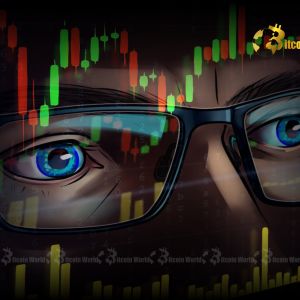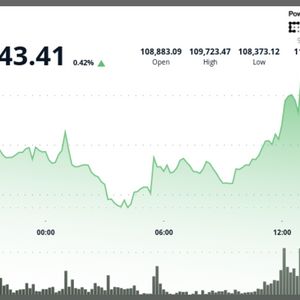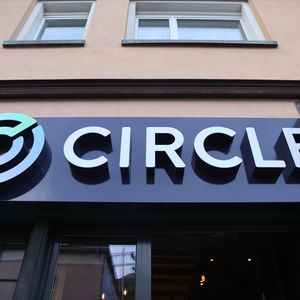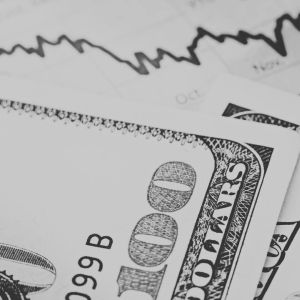Bitcoin RHODL Ratio: Unlocking the Next Market Phase
7 min read
Are you trying to make sense of Bitcoin’s recent movements? The world of cryptocurrency is always buzzing with data, and one particular metric is currently drawing significant attention: the Bitcoin RHODL Ratio . This lesser-known but powerful indicator is signaling a potentially pivotal shift in the market, suggesting a decline in speculative activity and a move towards more stable investor behavior. If you’re an investor, a trader, or simply curious about where Bitcoin might be headed, understanding this ratio is absolutely crucial. What Exactly is the Bitcoin RHODL Ratio and Why Does it Matter? The Bitcoin RHODL Ratio, a fascinating on-chain metric, has recently climbed to its highest level in the current market cycle. This isn’t just a random number; it’s a sophisticated tool that offers a unique lens into investor psychology and market structure. Developed by Glassnode, the RHODL Ratio compares the realized value of Bitcoin held by different age groups of investors. It specifically measures the relative value of Bitcoin held by addresses that have held their coins for 6 months to 2 years . This is then compared against those holding for a much shorter period: 1 day to 3 months . Think of it as a tug-of-war between experienced, patient holders and newer, often more speculative participants. When the RHODL Ratio increases, it indicates that a larger share of Bitcoin’s realized value is now held by these medium-term investors. Conversely, it suggests that short-term activity, often associated with rapid buying and selling, remains relatively low. This balance can tell us a lot about the underlying health and maturity of the market. Decoding the Shift in the Bitcoin Market Cycle Historically, significant movements in the Bitcoin RHODL Ratio have coincided with major turning points in the Bitcoin market cycle . For instance, peaks in the ratio have often preceded or accompanied periods of consolidation or accumulation, where the market cools down after intense rallies or bottoms out after sharp corrections. The current rise in the ratio suggests we might be entering a new phase, moving away from the frenetic energy of a bull run’s peak or the panic of a bear market’s trough. What does this mean for the typical market cycle? RHODL Ratio Trend Market Phase Indication Typical Investor Behavior Rising RHODL Ratio Accumulation/Early Bull Market Medium-term investors holding, short-term selling less active. Falling RHODL Ratio Late Bull Market/Distribution Short-term investors active, taking profits, increased volatility. High RHODL Ratio Market Bottom/Early Recovery Strong conviction from long-term holders, reduced panic selling. This metric provides a valuable perspective beyond just price action, giving us insight into the underlying strength and conviction of the holders. Why is Declining Speculative Activity a Positive Sign? The core implication of a rising Bitcoin RHODL Ratio is a noticeable decline in speculative activity . When the market is dominated by short-term traders, it tends to be more volatile and prone to rapid price swings driven by emotion rather than fundamental value. This ‘froth’ can make the market unpredictable and risky for long-term investors. A reduction in this kind of activity suggests several positive developments: Increased Stability: Less speculative trading often leads to more stable price action, as fewer participants are looking to make quick profits from minor fluctuations. Stronger Foundations: It implies that Bitcoin is increasingly being held by those with a longer-term vision, indicating growing confidence in its fundamental value and future potential. Healthier Growth: Organic growth, driven by adoption and fundamental utility, is more sustainable than growth fueled purely by speculation. This shift points to a market that is maturing, where the focus is less on chasing pumps and more on accumulating a valuable asset. It’s a sign that Bitcoin might be shedding some of its ‘wild west’ image and moving towards becoming a more established asset class. The Rise of Medium-Term Investors: A Sign of Maturity? The increasing share of Bitcoin’s realized value held by medium-term investors (those holding for 6 months to 2 years) is a compelling narrative. These are not the diamond-hand HODLers who bought in 2010 and never sold, nor are they the day traders looking for a quick flip. They represent a significant cohort that has weathered market volatility, demonstrating a degree of conviction and patience. Their growing presence suggests: Experienced Holders: These investors have likely experienced at least one significant market correction or bull run, making them less prone to panic selling during dips. Belief in Long-Term Value: Holding an asset for 6 months to 2 years indicates a belief in its value beyond immediate price movements. They are likely anticipating future growth, perhaps even the next major bull cycle. Reduced Supply on Exchanges: If more coins are held in these medium-term wallets, it implies less readily available supply on exchanges, which can contribute to upward price pressure in the long run. This trend is often seen as a sign of a maturing asset. It shows that Bitcoin is attracting a broader base of investors who are willing to commit for longer periods, suggesting a growing belief in its enduring value proposition. Navigating Current Crypto Market Trends with the RHODL Ratio Understanding the Bitcoin RHODL Ratio is just one piece of the puzzle when navigating the complex landscape of crypto market trends . While the ratio points to a cooling of speculative behavior and increased stability, it’s important to consider it within the broader context of other on-chain metrics, macroeconomic factors, and technological developments. Here are some actionable insights: For Long-Term Investors: A rising RHODL Ratio might signal an opportune time for accumulation, as it suggests less short-term noise and more conviction from experienced holders. For Traders: While volatility may decrease, understanding the shift can help in identifying periods where momentum might be building more steadily, rather than explosively. For New Entrants: This period of reduced speculation could offer a less intimidating entry point into the market, as prices might be less erratic. Always combine on-chain analysis with fundamental research into Bitcoin’s adoption, network growth, and regulatory developments. No single metric tells the whole story, but the RHODL Ratio provides a powerful perspective on investor sentiment and market structure. Actionable Insights for Investors: What Should You Do? Given the signals from the Bitcoin RHODL Ratio, what concrete steps can investors consider? This metric offers a unique lens, and here’s how you might integrate it into your strategy: Re-evaluate Your Time Horizon: If the market is shifting towards medium-term holding, perhaps it’s time to align your own strategy. Are you comfortable holding for 6 months to 2 years, or even longer? This metric suggests that patience might be increasingly rewarded. Consider Dollar-Cost Averaging (DCA): In a market with declining speculative activity and a growing base of patient holders, DCA can be a highly effective strategy. By investing a fixed amount regularly, you average out your purchase price and reduce the impact of short-term volatility. Focus on Fundamental Analysis: While on-chain metrics are powerful, always complement them with a deep dive into Bitcoin’s fundamentals. Look at network security, adoption rates, institutional interest, and technological upgrades. A strong RHODL Ratio combined with solid fundamentals paints a very bullish picture. Manage Risk Prudently: Even with positive indicators, the crypto market remains volatile. Never invest more than you can afford to lose, and always maintain a diversified portfolio. The RHODL Ratio signals a trend, not a guarantee. Stay Informed: Continue to monitor on-chain metrics, market news, and expert analysis. The crypto landscape evolves rapidly, and staying updated is key to making informed decisions. This shift towards more stable, medium-term holding behavior could be a prime opportunity for those looking to build their Bitcoin position strategically, rather than chasing quick gains. Challenges and Considerations While the Bitcoin RHODL Ratio provides valuable insights, it’s essential to acknowledge its limitations and potential challenges: Historical Performance vs. Future Guarantees: While past trends have correlated with market shifts, history does not perfectly repeat itself. New market dynamics, regulatory changes, or unforeseen events could alter future outcomes. Defining ‘Speculative Activity’: While the ratio identifies short-term holding, not all short-term activity is purely ‘speculative’. Some may be legitimate liquidity provision or arbitrage, which are healthy for the market. Macroeconomic Factors: The RHODL Ratio is an on-chain metric. It doesn’t directly account for broader macroeconomic forces like inflation, interest rate changes, or global geopolitical events, which can significantly impact investor sentiment and capital flows into crypto. Whale Movements: Large institutional or individual holders (whales) can significantly influence the market with relatively few transactions, potentially skewing metrics if their behavior differs from the broader trend. Data Interpretation: On-chain data requires careful interpretation. While Glassnode provides robust analysis, understanding the nuances of how addresses are categorized and how ‘realized value’ is calculated is crucial for accurate conclusions. Therefore, use the RHODL Ratio as a powerful analytical tool, but always integrate it into a holistic market view that considers various factors. Conclusion: A Maturing Market on the Horizon? The climb of the Bitcoin RHODL Ratio to its highest level in the current cycle is more than just a data point; it’s a profound signal. It indicates a clear shift away from hyper-speculative short-term trading and towards a market increasingly dominated by patient, medium-term investors . This transition suggests a cooling of the ‘get rich quick’ mentality and a growing appreciation for Bitcoin’s long-term value proposition. In essence, we might be witnessing a significant step in the evolution of the Bitcoin market cycle – a phase characterized by greater stability and a more solid foundation for future growth. While the world of crypto market trends remains dynamic, the RHODL Ratio offers a compelling argument that Bitcoin is maturing, attracting a more resilient investor base, and potentially setting the stage for sustainable development. This isn’t just about price; it’s about the very fabric of who holds Bitcoin and why, painting a picture of a more robust and less volatile future for the leading cryptocurrency. To learn more about the latest crypto market trends, explore our article on key developments shaping Bitcoin’s institutional adoption and future price action.

Source: Bitcoin World



